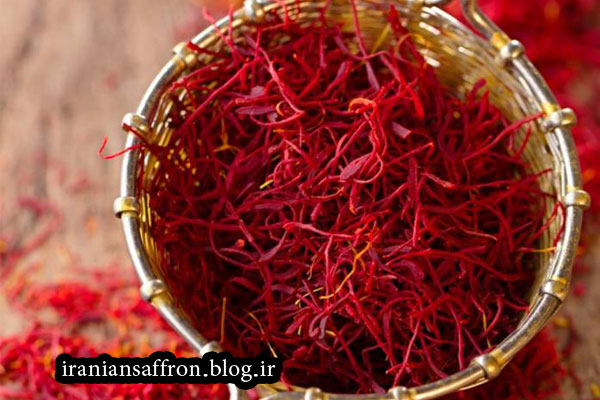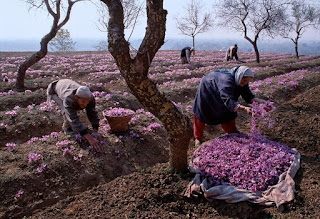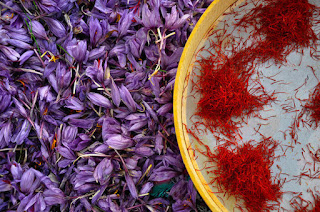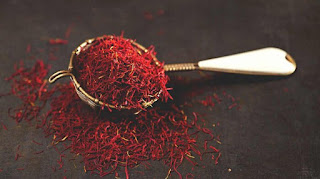10 amazing features of best quality saffron for skin, hair and health

In this article, we want to introduce you to the special features of Iranian saffron. Original Saffron is a valuable herbal spice derived from saffron flower stigma.
Saffron flower is a perennial onion plant with the scientific name "Crocus Sativus".
"Crocus" in Greek means thread and string, which refers to the appearance of saffron flower stigmas. The name saffron, which is called "Saffron" in English, comes from the word bile in Arabic, which means yellow.
Iranian Saffron has many special characters for skin, hair, menstruation and body health and is one of the most expensive agricultural products in the world.
This special spice has been attracting tons of consumers for about a thousand years. Saffron is a native plant of the empty, treeless areas of Greece and grew in the region before it was bred in Europe, Asia and North America.
Saffron flower is a laborious agricultural product, which is why its price increases. The plant has a three-branched stigma in its center that is separated by hand, inserted into the sieve, and enhanced by its heat treatment, aroma and flavor.
This plant is resistant to hot climates and currently Iran is the largest producer of saffron in the world.
Regardless of the natural and specific essences of saffron, this plant has many health benefits, and this is why it is known as an expensive spice. What are the special properties of original saffron?
1 - Properties of saffron to strengthen mental health

Stimulation of the mind and brain is one of the health effects of saffron. Various studies have shown that the stigmas of the plant, which is the original saffron and its petals have similar effects on people's mood and actually act as antidepressants, so the properties of saffron petals are unique.
Safranal and crocin, which are two compounds in saffron, such as dopamine, serotonin and neuropyrinfrine, regulate the nerves and are able to reduce mild to moderate depressive symptoms even without the use of regular psychiatric medications.
A two-month experiment was performed on 40 depressed people in Iran. Some patients were randomly assigned to take 20 mg of Prozac antidepressant daily, and the remaining 20 patients took 15 mg of saffron petals twice a day. The researchers concluded that saffron has similar effects to antidepressants.
It affects the endocrine system and helps reduce stress and anxiety. From time immemorial, people have used saffron to soothe the mind and improve restful sleep due to its soothing properties. Saffron also enhances learning and memory.
In Japan, meanwhile, saffron is packaged in capsules and used to treat forgetfulness and Parkinson's. Crocin prevents problems with dementia, such as Alzheimer's, which occurs as a result of aging.
2 - Prevention of macular degeneration or yellow spot damage

Macular degeneration is a condition that causes blindness in old age due to aging and the destruction of cells in a part of the eye called the macula.
The crocin and croutons found in saffron prevent cell damage and delay the destruction of cells in the eye by age.
3 - Properties of original saffron for the skin
The antioxidants in saffron have anti-aging properties. The properties of saffron for facial skin include softness, flexibility and radiance.
Common uses of saffron can whiten the skin, prevent pimples, remove scars and dark spots on the skin, and other skin blemishes. Saffron contains vitamin B12 and also helps treat cracks and dry lips.
4 - Properties of saffron for hair

Saffron strengthens hair strands from root to tip, preventing hair loss.
If you mix saffron with licorice, you can use this hair tonic to treat alopecia or baldness and hair loss, as well as stimulate faster hair growth.
Saffron improves blood flow to the hair follicles, following the blood flow, more food and oxygen are provided to the hair follicles.
5 - Benefits of saffron for respiratory health
Saffron treats whooping cough and the common cold. It acts as an expectorant and dilutes sputum in the lungs and throat.
Iran’s Saffron is able to act as an anti-inflammatory and stimulant compound. These benefits of saffron can be helpful in treating asthma.
Asthma attacks occur when the respiratory tract is narrowed due to inflammation and saffron can prevent this from happening.
6 - Reduce and relieve pain

Pain relief is one of the valuable benefits of saffron. The saffron volatile substance acts as a painkiller and cures toothache.
Iranian Saffron has antiseptic, soothing and soothing properties, so it is useful for infants and teething babies, and can also improve sleep patterns.
In indigenous areas, saffron is used by residents as a natural and soothing sedative for the nervous system and is able to soothe irritated nerve cells that cause pain.
7 - Properties of saffron in menstruation and hormone health
Premenstrual syndrome is caused by a variety of hormones that can be devastating all the time.
Iranian Saffron can to some extent affect the endocrine system and release some hormones (or nerve chemicals) that are helpful in controlling premenstrual syndrome such as serotonin.
Ceratonin is a happiness hormone that helps reduce the severity of mood swings in women. This food is also useful for late puberty in girls.
8 – Saffron for heart health

Saffron is a rich source of potassium, an important element in maintaining heart health. Potassium dilates and enlarges blood vessels and blood vessels, thus lowering blood pressure.
Potassium in saffron also prevents hardening of the arteries, heart attacks and strokes. As mentioned, saffron contains a substance called crocin, which can regulate blood cholesterol levels, so this spice is very good for heart health.
9 - Original Saffron improves digestion and digestion of food
Saffron also affects stomach upset and bloating and controls the liver and spleen. It is an antispasmodic and helps treat constipation and bloating for any reason.
10 - Saffron affects optimal cellular function
The volatile compounds in saffron effectively neutralize free radicals, and free radicals damage cells.
Saffron contains about 150 biological chemicals, including antioxidants, carotenoids, crocin and saffron, which are helpful in increasing cell growth and repair.
Saffron also contains high levels of potassium and magnesium, which are one of its health benefits.
This strange and organic combination of saffron has also made it a powerful cancer prevention agent that optimizes DNA synthesis and cell proliferation.














